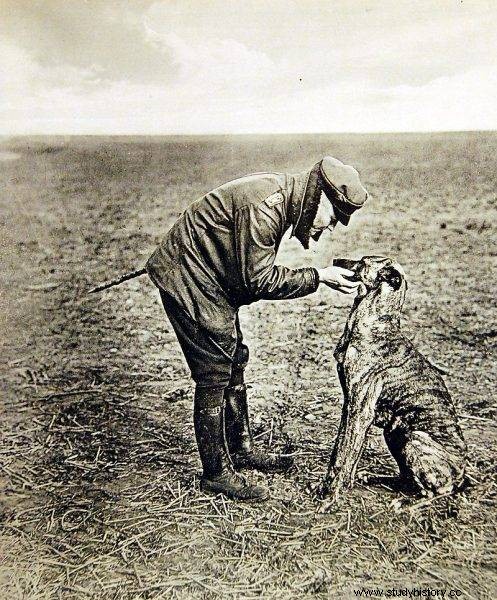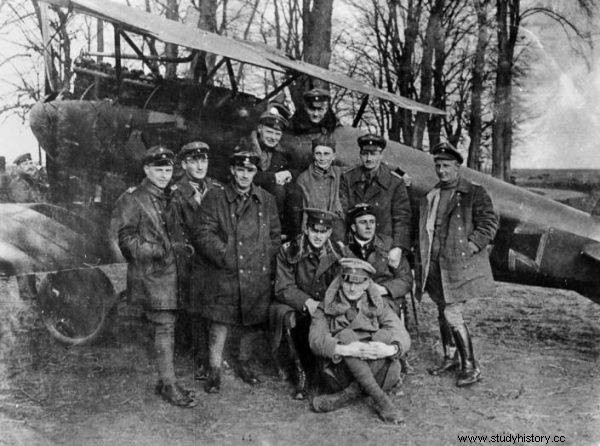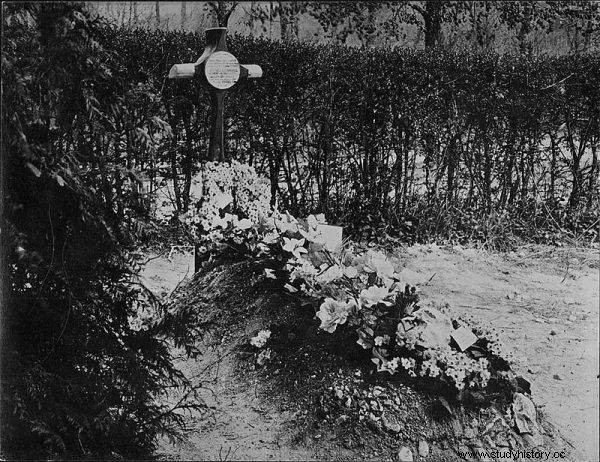On April 20, 1918, Manfred von Richthofen, known as the Red Baron, achieved his 79th and 80th aerial victories. Thus, he became the best fighter pilot of the First World War. An Allied bullet hit him a day later.
Manfred von Richthofen was born on May 2, 1892 in the Borek estate, which today is one of Wrocław's estates. He spent his childhood in nearby Świdnica, where he graduated from school. Shortly after graduating in 1911, he joined the 1st Cavalry Regiment. Emperor Alexander III.
Initially, he served in Ostrów Wielkopolski. After the outbreak of World War I, he was first directed to the Eastern Front, and then to the Western Front. In 1915, when the war died out in the trenches, he asked like many other cavalrymen to be transferred to the air force.
An aviator with uhlanic fantasy
In the initial period of the Great War, the pilot was considered a coachman. It was only supposed to deliver the observer to the designated point and bring him back to his home airport. Therefore pilots were recruited mainly among non-commissioned officers who did not need to know tactics, reconnaissance of troop movements and fire control. It was the observer who was considered the most important member of the crew. For this reason, observers had completely different recruiting rules. In their case, general military knowledge, knowledge of tactics and identification of the type of forces were required.
Therefore, cavalry officers were willingly admitted to reconnaissance squadrons, which very often received similar tasks on land, and artillery officers were sent to the squadrons directing artillery fire. The rules of recruitment and admission to aviation were so restrictive that, for example, Oberleutnant Leon Sapieha, although he had obtained pilot qualifications before the war, could only become an observer through his officer rank.

On April 20, 1918, Manfred von Richthofen, known as the Red Baron, achieved his 79th and 80th aerial victories. Thus, he became the best fighter pilot of World War I.
Another reason cavalrymen found themselves in aviation was the nature of warfare . After the first period, when mainly maneuvering, the war went underground - into trenches of hundreds of kilometers. Aviation has become a valve for the surplus of cavalry officers who have become "unemployed."
Changes on the front forced the higher commanders to change their approach to the recruit. Therefore, officers more and more often became pilots. Especially in fighter aviation.
Ace hunting
Von Richthofen scored the first shot as an observer. Thanks to his excellent results and great opinion, he was able to get into the pilot course. After its completion, he returned to his original unit and personally mounted a machine gun on the wing of the plane, from which he shot down a second enemy plane on April 26, 1916. Unfortunately, this shooting was also not recognized. The machine fell behind the front lines.
He came to fighter aviation on September 1, 1916 by a complete accident. At the airport, he met the fighter ace Oswald Boelcke, who was completing the lineup of the newly formed Jagdstaffel 2 (Jasta 2).
The fact that it was a good choice proves its effectiveness - on October 10 von Richthofen became an ace with five planes on his account . Its fifth victim was the multi-tasking F.E.2.
Commander
In January 1917 he received the highest German decoration, the so-called "Heavenly Max" - the cross of Pour le Mérite. In the same month, he became the commander of Jasta 11.
The first victory in Jasta 11, and the first victory of this squadron, was achieved by von Richthofen on January 23, 1917. Jasta 11 began to achieve enormous successes, and their peak was (so called by the British) "bloody April" of 1917 . This month alone, the Red Baron shot down 20 Allied planes. On April 29, Manfred wrote in his memoirs:
We flew along the line of the trenches, my brother [Lothar, died on July 4, 1922 piloting a passenger plane - editor's note aut.] was right behind me and before the rest of the band. Suddenly I saw two enemy planes sent to direct artillery fire (...). Brother caught his opponent first. He attacked one of the machines, closely following the actions of the other. At the last moment, before entering combat, I quickly looked for a third enemy plane nearby. (…)

In January 1917 he received the highest German decoration, the so-called "Heavenly Max" - the cross of Pour le Mérite. In the same month, he became the commander of Jasta 11.
A quick, short burst was enough for the enemy plane to crumble to pieces. I don't think I ever achieved such an instant victory. As I watched the wreckage of the plane I had shot down, I glanced at my brother's machine, some 500 meters away, still battling his opponent. (...) Suddenly, the attacked airframe reared up - an obvious signal that my brother had hit the pilot. The hostile camera went down, losing flaps along the way, and then falling apart. They fell near the remains of my victim.
It was the Red Baron's 52nd victory.
Master of Champions
On September 1, 1917, the Red Baron first piloted the famous Fokker three-plane in combat flight. And with great success - at 7.50 am he shot down his 60th opponent over the Zonnebeeke.
Together with four other Jasta 11 airmen, we attacked a very provocative English bomber. I went down fifty meters to it and fired twenty shots at it. The enemy plane caught fire and hit the ground . The opponent probably took me for an English triplane, because the observer did not even grab a rifle when he saw me.
On March 27, 1918, he already had 70 kills. On April 20, he flew at the head of the squadron for a patrol over the front line. Reaching the sector, he spotted and then attacked a large group of British Sopwith Camels. In the first strike, he shot down one Camel at close range. It was his 79th shot down.

Red Baron's Tomb
Seeing the plane crumbling and finally hitting the ground, he pulled his Fokker nose up and attacked another British fighter. He stuffed a short burst of machine guns into it. Camel rolled over the half-barrel and dove to the ground. His 80th victim just crashed in muddy Picardy. On the same day, as usual after this type of success, a large, alcohol-drenched party was organized in the squadron. The pilots enjoyed themselves until the very morning.
Last Flight
On April 21 in the morning, Manfred von Richthofen led the Fokker squadron to a patrol. Over the Morlancourt Pass near Somme, he fought his last fight with British pilots. His opponents were the Sopwith Camel fighter pilots of the RAF 209th Squadron.
When von Richthofen pursued the inexperienced Canadian pilot Wilfrid May, came under the fire of Captain Arthur "Roy" Brown. He dodged. One. Second. He descended just over the line of the trenches. There a bullet caught him launched by Sergeant Snowy Evans from the 53rd field artillery battery. The Red Baron was killed instantly.
The autopsy showed that the bullet pierced the fuselage of the plane and penetrated the body of the German ace from below, damaging the liver, lungs and heart. It only stopped in his jacket.
Manfred von Richthofen was buried with military honors by the soldiers of the 3rd Royal Australian Air Force Squadron.
Sources:
- Manfred von Richthofen, Memoirs of the Red Baron , Wrocław 2011.
- Andre R. Zbiegniewski, Squadron of the losers , Lublin 2006.
- Karl Bodenschatz, Under the skies of Flanders , Lublin 2007.
